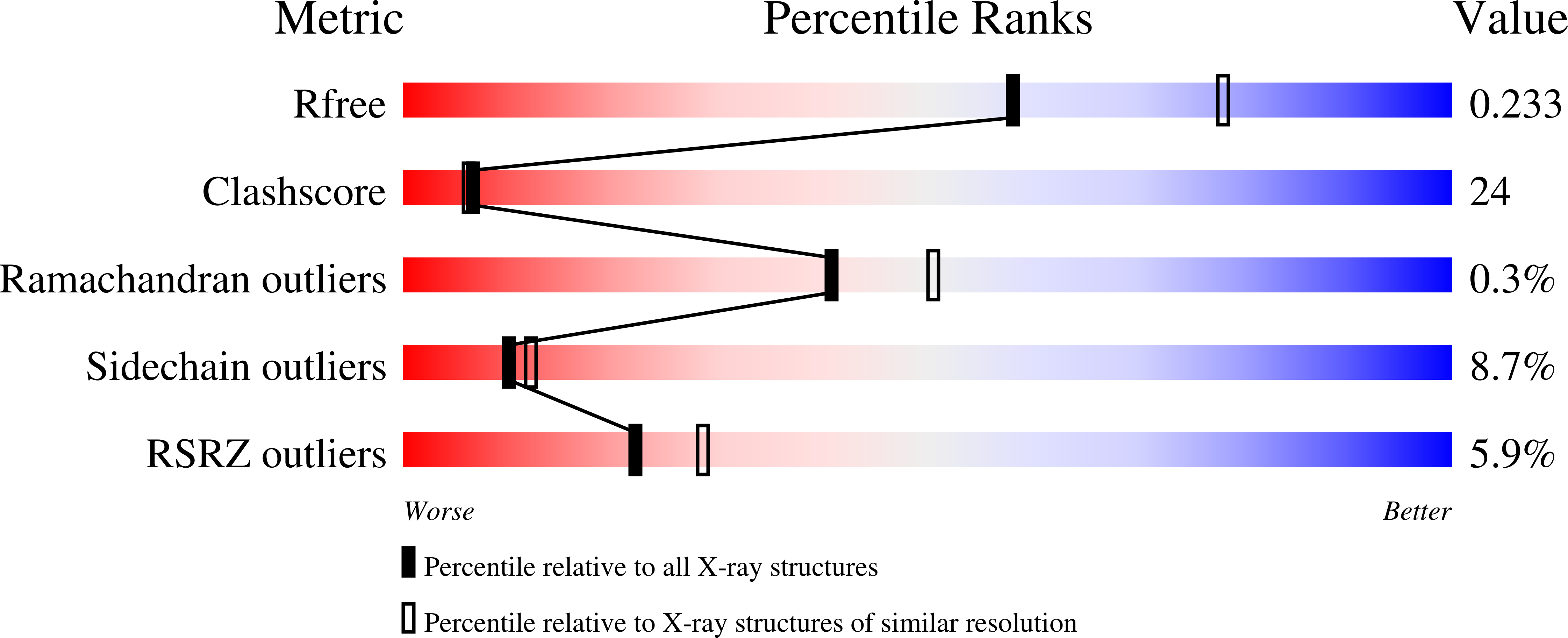Structural analysis of the chromosome segregation protein Spo0J from Thermus thermophilus.
Leonard, T.A., Butler, P.J., Lowe, J.(2004) Mol Microbiol 53: 419-432
- PubMed: 15228524
- DOI: https://doi.org/10.1111/j.1365-2958.2004.04133.x
- Primary Citation of Related Structures:
1VZ0 - PubMed Abstract:
Prokaryotic chromosomes and plasmids encode partitioning systems that are required for DNA segregation at cell division. The plasmid partitioning loci encode two proteins, ParA and ParB, and a cis-acting centromere-like site denoted parS. The chromosomally encoded homologues of ParA and ParB, Soj and Spo0J, play an active role in chromosome segregation during bacterial cell division and sporulation. Spo0J is a DNA-binding protein that binds to parS sites in vivo. We have solved the X-ray crystal structure of a C-terminally truncated Spo0J (amino acids 1-222) from Thermus thermophilus to 2.3 A resolution by multiwavelength anomalous dispersion. It is a DNA-binding protein with structural similarity to the helix-turn-helix (HTH) motif of the lambda repressor DNA-binding domain. The crystal structure is an antiparallel dimer with the recognition alpha-helices of the HTH motifs of each monomer separated by a distance of 34 A corresponding to the length of the helical repeat of B-DNA. Sedimentation velocity and equilibrium ultracentrifugation studies show that full-length Spo0J exists in a monomer-dimer equilibrium in solution and that Spo0J1-222 is exclusively monomeric. Sedimentation of the C-terminal domain of Spo0J shows it to be exclusively dimeric, confirming that the C-terminus is the primary dimerization domain. We hypothesize that the C-terminus mediates dimerization of Spo0J, thereby effectively increasing the local concentration of the N-termini, which most probably dimerize, as shown by our structure, upon binding to a cognate parS site.
Organizational Affiliation:
MRC Laboratory of Molecular Biology, Hills Road, Cambridge CB2 2QH, UK. tleonard@mrc-lmb.cam.ac.uk
















